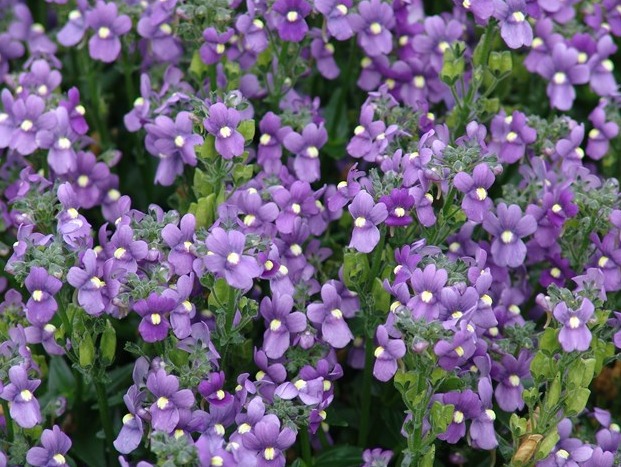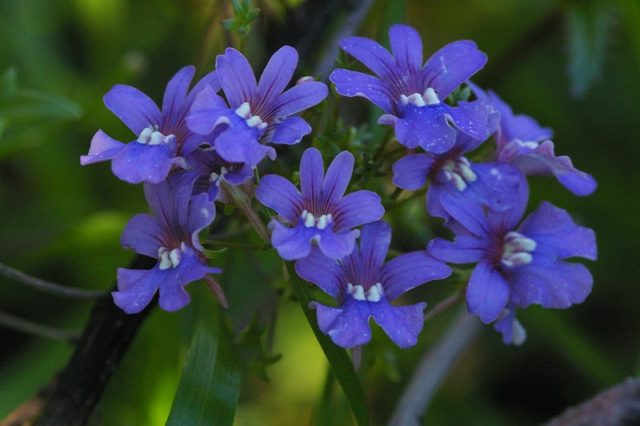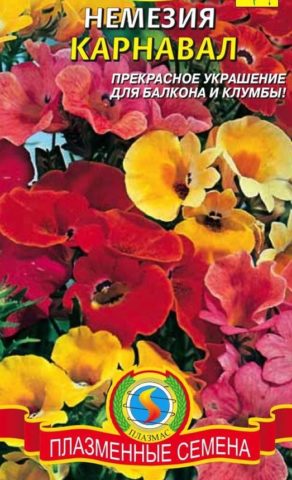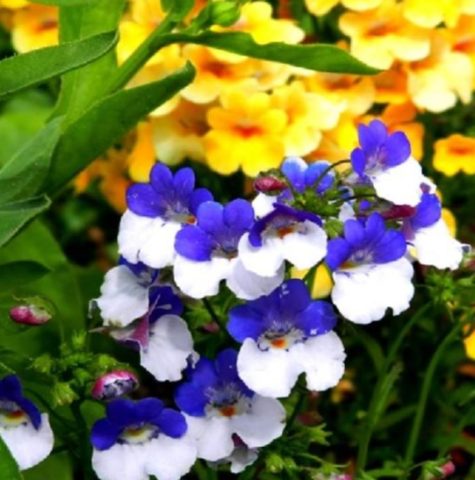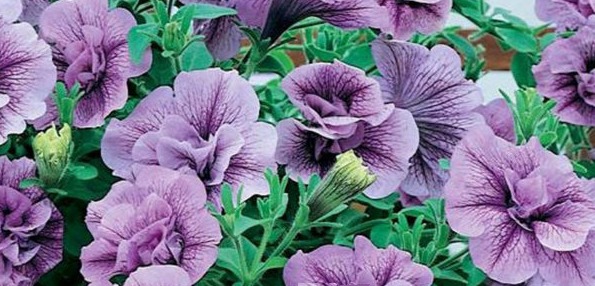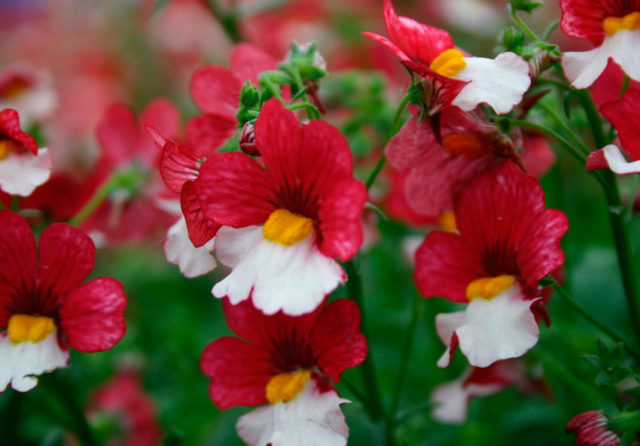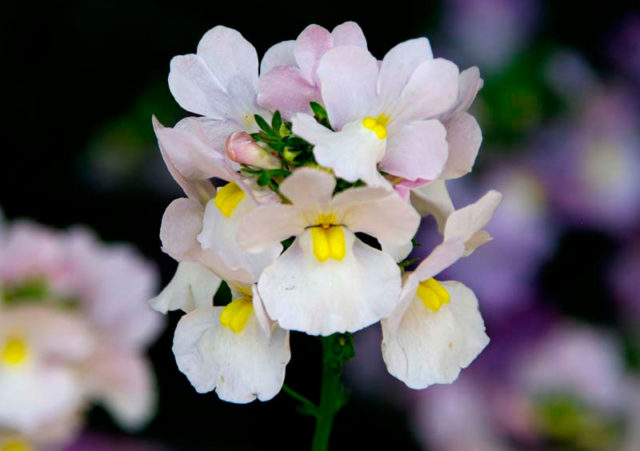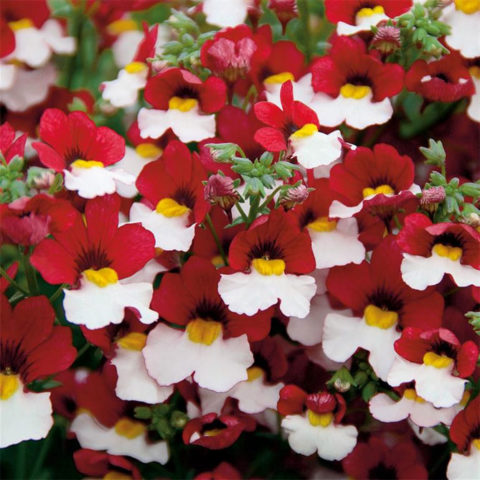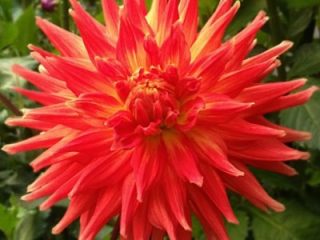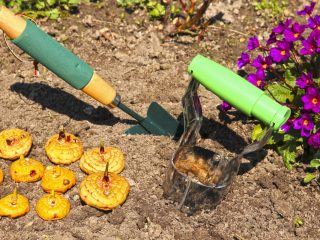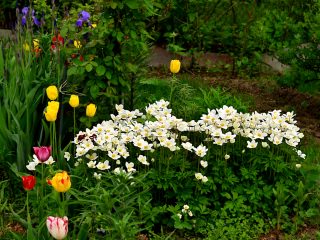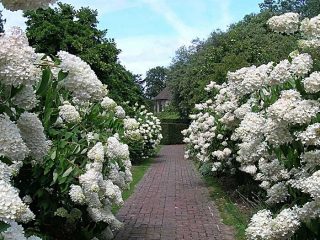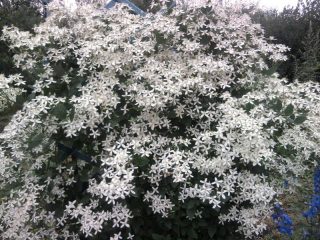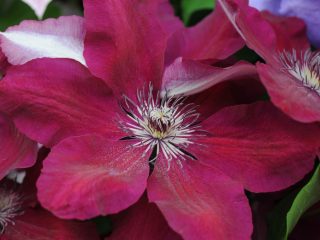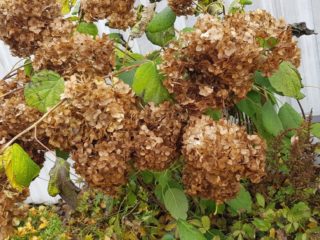Content
Planting and caring for nemesia is quite simple, so even a novice gardener can cope with growing this beautiful flower. In Russia, the crop is grown as an annual. Since nemesia is heat-loving, it is taken home for the winter and grown under normal indoor conditions before being transplanted into the ground the next year (in May or even June).
Description of nemesia
Nemesia is a perennial flowering shrub from the Scrophulariaceae family. This is not a very tall plant - on average from 30 to 60 cm. The shoots are branched, sometimes with pubescence. The leaves of nemesia are lanceolate, arranged oppositely, and have serrated edges. The color is bright green.
The flowers are small, up to 2 cm in diameter, of an interesting shape: some of the petals are fused, others are separate. Painted in different colors:
- white;
- yellow;
- orange;
- pink;
- crimson;
- blue.
The flowers are interesting not only in shape, but also in color: they can be two-color or three-color. The main advantage of nemesia is the creation of the effect of a lush floral carpet. Flowering begins in July and ends in mid-September, before the onset of the first frost. Bushes completely cover the ground, thanks to which they can decorate even inconspicuous corners of the garden and create a beautiful backdrop for other plants.
Nemesia is represented by both erect and hanging shrubs. They can be grown not only in open ground, but also in boxes, pots and flowerpots. In summer, containers are placed on the terrace, in the garden, next to the gazebo, and in winter they are taken into a heated room. Nemesia comes from South Africa, so it prefers warmth and good moisture.
Types and varieties of nemesia
This flower has about 50 species, which differ in winter hardiness, flower color, height, leaf shape and other indicators. Popular varieties of nemesia with photos and names are described below.
Nemesia variegated
This type of nemesia (Nemesia Versicolor) is characterized by a small height (up to 25 cm) and large flowers of a rich blue color. The culture is represented by two varieties:
- Blue Bird - blue flowers interspersed with yellow or white.
- Edelblau - inflorescences of a rich blue color (reminiscent of forget-me-nots).
Nemesia hybrid
This group includes all hybrid varieties of nemesia. These are shrubs with a height of 15 to 60 cm.The leaves are elongated, with serrated edges, flowers up to 2 cm in diameter. Hybrid nemesia (Nemesia Hybrida) is represented by several varieties:
- Triumph is a dwarf hybrid with an average height of 15 cm, the flowers have a variety of colors: white, yellow, pink, red, purple.
- Carnival (Nemesia strumosa Carnival mixed) – the height is also small, up to 20 cm. It is a mixture of orange, yellow, pink, red or variegated colors.
- The mantle of the king is a nemesia with a two-tone color (blue and white).
- Thumbelina is a recently developed variety. The height of nemesia reaches 20 cm, the color is bluish, similar to lavender. The flowers grow up to 3 cm in diameter.
Nemesia floriferous
This type of nemesia (Nemesia floribunda) is represented by medium-sized shrubs up to 40 cm high. The flowers are pale blue and white. So far, it is not widespread, but recently it has become more common in flower beds.
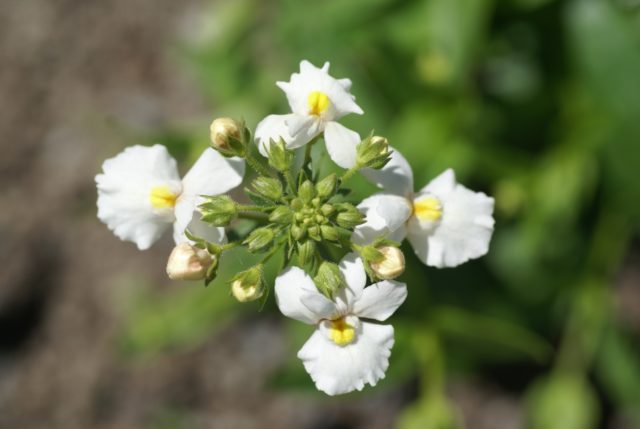
The flowers of the lush variety are white in color and have a yellow spot in the center.
Nemesia goiter
This nemesia (Nemesia strumosa) is of medium height (about 35-45 cm). Moreover, its upper leaves are linear petiolate, and the lower ones are oval-shaped and sessile. The flowers are irregular in shape, resemble a crop, up to 2.5 cm in diameter. They are painted in different colors - white, yellow, red, pink, orange, sometimes with a variegated pattern.
Known in cultivation since 1892, it is represented by several varieties, the most popular of which are:
- Aurora (Aurora) is a small bush up to 30 cm, flowers are white and crimson-red (scarlet).
- Funfair - nemesia has yellow and cream flowers.
- Fair King - bright red, fiery.
- National Ensign - white and red flowers.
Nemesia bushy
This flower is also called azure (Nemesia Fructicans or Nemesia Foetebs). It reaches a height of 20 to 40 cm, begins to bloom in June, and ends in August. The inflorescences are white, blue and purple.
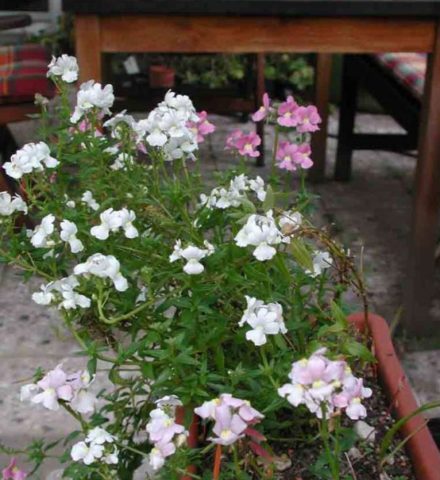
The bush is quite tall, with erect shoots
Application in landscape design
This flower is one of the best ground covers.
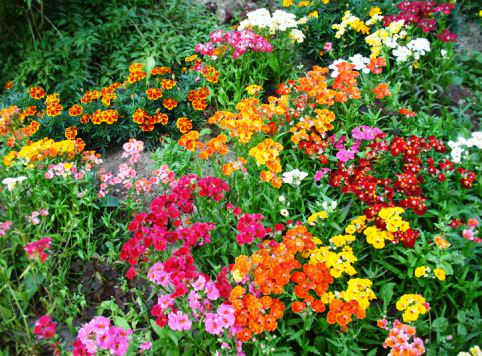
Nemesia is used to create a flower carpet and decorate remote areas in the garden.
The crop also looks great in various compositions: alpine slides, borders, rockeries, mixborders, plantings along paths.
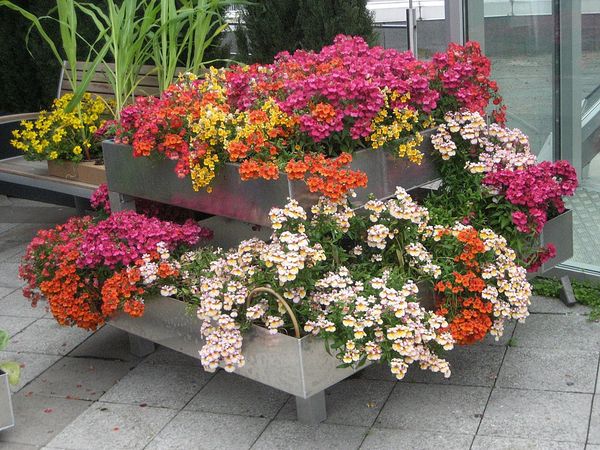
Using different varieties of nemesia you can create interesting flower beds
The plant is combined with low-growing seedlings:
- pansies;
- petunias;
- marigold;
- ageratum;
- lobelia and others.
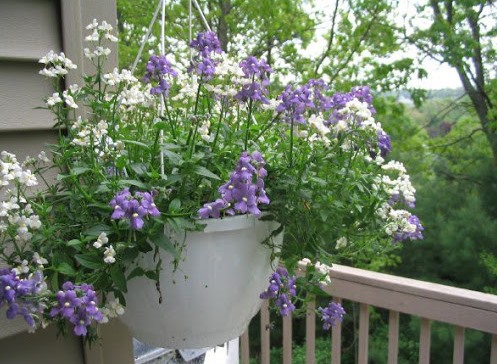
The crop can be grown in a hanging pot on the veranda
Features of reproduction
The reproduction characteristics of this flower depend on the type of nemesia and the period of its cultivation:
- Annual plants and hybrids are propagated by rooted cuttings or by dividing the bush.
- For perennial nemesia, you can use seed sowing.
Since nemesia is heat-loving, seedlings are grown indoors. To do this, it is necessary to create several conditions: temperature, light, greenhouse and moisture. It is not difficult to obtain seedlings, but you need to work with the seeds carefully: they are very small, so when planting they are mixed with sand.
All hybrid varieties are propagated by cuttings. To do this, in August, take the apical shoots of an adult bush (3-4 years old) 20-25 cm long, make an oblique cut and plant them in a container that can be kept in a greenhouse. Abundantly moisturize and grow until September. Then they are transferred to a heated room and watered periodically.In May of next year, germinated nemesia cuttings are planted in open ground.
Another method of propagation is by dividing an adult bush (in early summer). Using a sharp shovel, they cut the ground, dig up the plant and cut the rhizome into several sections so that each of them has several healthy shoots left. Then they are planted in a permanent place and watered abundantly. They are taken indoors for the winter.
Growing nemesia seedlings from seeds
You can sow nemesia seeds at home. They are grown at room temperature. If it is cloudy outside, it is necessary to organize additional lighting.
When to sow nemesia
Seeds are collected independently or purchased in a store. Soil and containers need to be prepared in March, since seeds are usually sown at the end of this month. In the southern regions, the procedure can be carried out a little earlier, and in Siberia and the Urals - in early April. Nemesia seedlings are transferred to open ground only in mid-May or even early June, when the soil has time to warm up well enough.
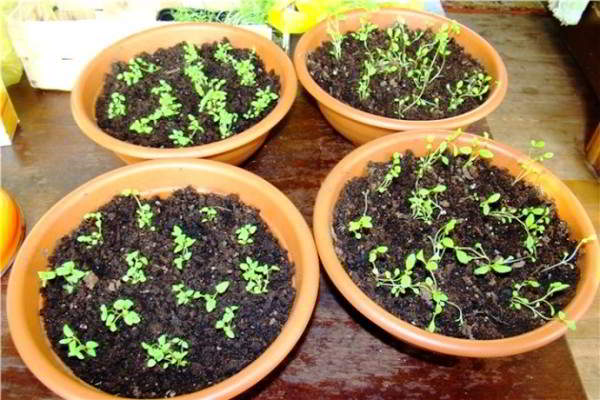
You can grow nemesia seedlings in shallow containers
Preparing containers and soil
Initially, the seeds are planted in wooden boxes or plastic containers. Before planting, it is advisable to keep them for 1-2 hours in a weak solution of potassium permanganate or hydrogen peroxide (1-3%), then rinse with water.
Soil for growing flowers can be purchased at the store (universal for seedlings) or made independently from peat and sand (2:1).You can make another mixture of garden soil and peat (1:1) with the addition of a few pinches of sand and wood ash. The soil for nemesia is also pre-disinfected or frozen for a week.
How to plant nemesia seeds
Sequence of actions when landing:
- The soil layer is crushed and placed in containers.
- Carefully level, but do not compact.
- Seeds are distributed over the surface (they can be taken with a moistened toothpick).
- There is no need to sprinkle anything on top - just moisten the soil well with a spray bottle.
- Cover with a film with holes and put in a relatively warm place (20-22 ° C).
Seedling care
The first shoots of nemesia appear 10-15 days after planting. At this time, it is better to put the containers in a cool place, then grow them at a temperature of 8-10 degrees so that the seedlings do not stretch. It is necessary to follow a few simple rules for care:
- The greenhouse for growing flowers is regularly ventilated by removing the film for 30 minutes.
- Provide bright but diffused light. If there is a lack of sun, phytolamps are used and a screen is installed (to diffuse the rays).
- 7-10 days after the first shoots, complex mineral fertilizer (in liquid form) is applied to the soil.
- A month after planting the seeds (when 2-3 leaves appear), the shoots are transplanted into individual containers: pots, cups.
- At the same time, the temperature can be increased slightly - up to 13-15 ° C.
- In the future, care comes down to regular watering. Two weeks before transplanting nemesia, the temperature can again be lowered to 8-10 °C.
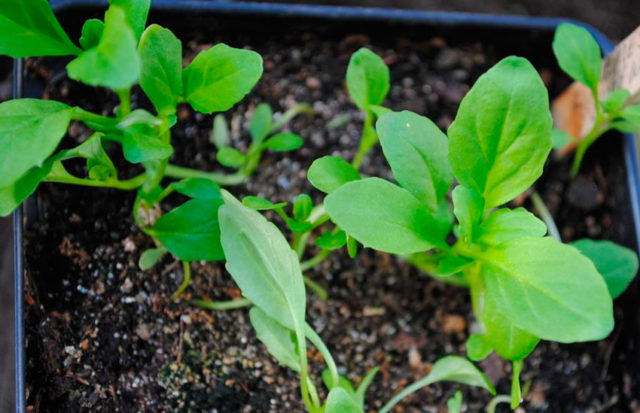
Before transplanting nemesia seedlings into the ground, they must be hardened for 10-15 days
You can learn about practical tips for growing nemesia flower seedlings from the video.
Planting nemesia in the ground
Planting and caring for nemesia in open ground is not very difficult. It is necessary to choose a place, follow the watering and fertilizing regime.
Recommended timing
The nemesia flower is replanted after the threat of return frosts has completely disappeared. Depending on the region, the timing will be as follows:
- in the south - early May;
- in the middle zone - mid-May;
- in the Urals and Siberia - the first days of June.
Site selection and soil preparation
The soil for nemesia should be loose, with small lumps. A neutral or slightly acidic reaction is allowed. The optimal place for planting is completely open or with light partial shade from shrubs and trees. If possible, this should be a hill and not a low area where moisture accumulates. It is not necessary to protect the place from the wind - low nemesia bushes will not be damaged even by a hurricane.
No special soil preparation is required for the flower - the area needs to be cleaned and dug up with half a shovel. If the soil is depleted, complex mineral fertilizer is applied to it (60 g per 1 m2) or humus (2 kg per 1 m2).
Landing algorithm
The sequence of actions when planting a flower is standard:
- First, you need to mark several holes of shallow depth on the site (the roots must fit completely).
- Neighboring holes are dug at a distance of 20-30 cm. Less dense planting of nemesia is also allowed (alternating with other plants).
- The seedlings are planted in the soil, the soil is covered and compacted a little.
- Water with settled water.
- Mulch with peat, straw, sawdust or other materials.
A layer of mulch will not only allow the soil to retain moisture longer, but also protect against the active growth of weeds.
How to grow nemesia in open ground
Any gardener can handle growing nemesia (pictured). In order for the flowers to cover the bush luxuriantly, it is enough to water the plant in a timely manner and pinch the tops of the stems.

Regular pinching of shoots gives the bush a beautiful shape
Watering and fertilizing schedule
Water the nemesia regularly, preventing the soil from drying out and cracking. If it rains periodically, additional moisture will not be needed; if there is little rain, water it weekly, and in case of drought, every 2-3 days. It is better to do this in the evening so that the leaves and flowers of nemesia are not burned by the sun's rays.
Nemesia is fed 2 or 3 times per season, for example, in April, June and at the end of July. For flowers, you can use complex mineral fertilizer or liquid organic matter: slurry, chicken manure solution, humus infusion.
Weeding and loosening
Proper planting and care allow you to achieve lush and long-lasting flowering of ampelous nemesia (pictured). To do this, you need to regularly loosen the soil around the plants. This is especially important to do after watering or heavy rain (after 2-3 days). Then the moisture will quickly reach the roots and all tissues of the plant.
Weeding of the flower is carried out as needed. It is important to ensure that weeds do not have time to grow. This not only spoils the appearance of the flowerbed, but also prevents the normal development of the main crop.
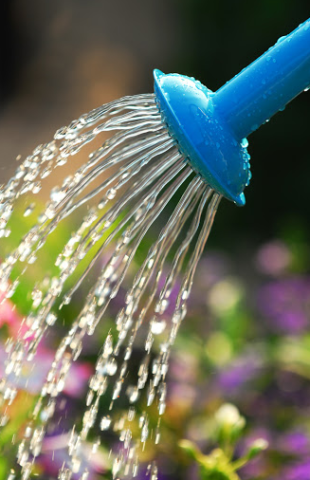
If you regularly water the flower and loosen the soil, the flowering will be lush and long (1.5-2 months)
Pinching and trimming
Starting in July, when nemesia produces its first flowers, the apical shoots must be periodically pinched with your fingers, removing all strongly protruding branches. This gives the bush the correct shape and stimulates the growth of additional shoots. The bush does not require special pruning - you just need to periodically remove broken and dry branches, especially in the spring.
Care after flowering
It is very easy to prolong the flowering of nemesia. To do this, you should regularly remove faded shoots. Then the bush will produce new shoots, including flower stalks, which will give the effect of a lush carpet.
Wintering
For the winter, nemesia must be dug out of the ground and transplanted into pots or other containers. Then they are grown at normal room temperature (20-22 °C). No fertilizing is required, but you need to periodically loosen the soil and water it. The soil must remain moist.
Pests and diseases
The moist environment that nemesia prefers often provokes the development of root rot and other fungal diseases. As a rule, such diseases are difficult to treat, so it is easier to dig up the bush and remove it so that neighboring plants do not become infected.
As a preventative measure, in April or May it is necessary to treat the bushes with fungicides:
- "Tattu";
- "Profit";
- "Ordan";
- "Fundazol";
- Bordeaux mixture.
Sometimes flowers are affected by spider mites and other pests. Therefore, it is necessary to periodically inspect the plants and carry out treatments with insecticides or folk remedies (infusion of mustard powder, chili peppers, onion peels, chopped garlic and others).
Conclusion
Planting and caring for nemesia is not very difficult.The main requirements are regular loosening and watering. Thanks to this, you can get beautiful thickets, reminiscent of a variegated carpet, which will decorate both central and remote areas of the garden.
